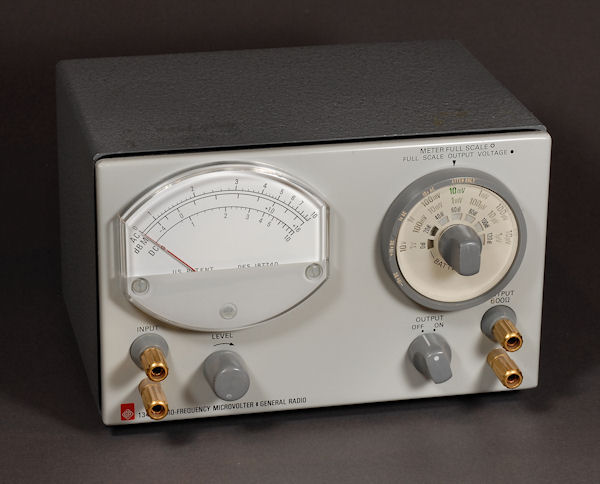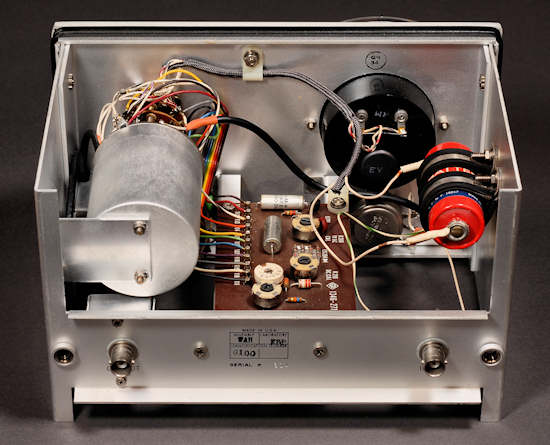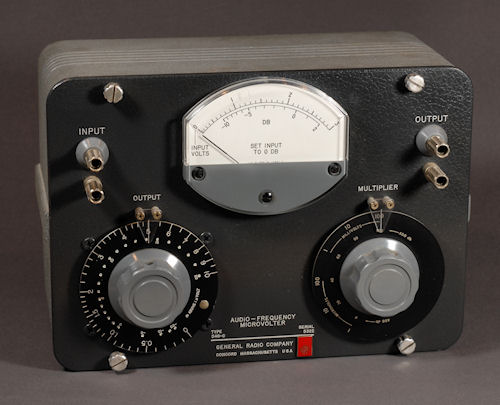

The 1346 Microvolter is often described as a microvoltmeter in equipment listings and by those unfamiliar with it. The Microvolter is actually a precision audio attenuator that happens to include a meter for monitoring the output. It was not intended as a direct measurement tool.
Two output controls, a 20dB/step attenuator and a continuous control, provide a total of 140 dB attenuation. There is also a DC source in the instrument, allowing outputs of 1 uV to 10 V. The input impedance varies from about 550 ohms to 25 Kohms, but the output impedance is 600 ohms at all times.
The bandwidth is DC to 100 kHz and almost any oscillator can be used as a source. The meter bandwidth is 10 Hz to 100 kHz. The meter requires battery power on the lower range, and of course the DC functions require battery power. The specified 12 V battery is an Eveready 228, RCA VS329, or Burgess PM8. They are cylindrical batteries about the size of a C cell, longer, but with snaps on each end like a 9V battery. A 9V battery might work fine, but wouldn't give the full 10V DC output specified. The original batteries are carbon-zinc cells and should still be obtainable, though certainly special order. There is plenty of space in the 1346, so a small multiple cell battery holder with snaps could probably be installed without modifying anything. Here's a shot of the inside of the unit, including the correct original battery type.

This is an ideal unit for testing audio preamps and amplifiers. It's completely floating and won't introduce ground loops or hum, as long as your signal generator doesn't.
The 1346 replaces the older 546C, which had no meter amplification for small signals or DC functions. The 546C is still a fine unit for many purposes.

C. Hoffman
last edit October 12, 2011